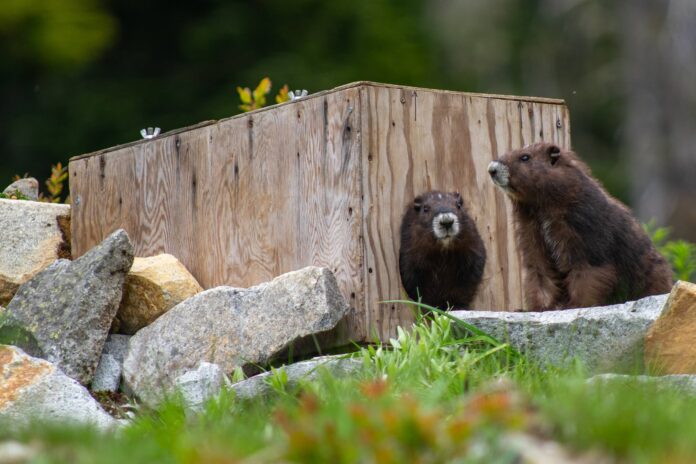A record-breaking 89 marmot pups have been born this year.
That’s according to the Vancouver Island Marmot Recovery Foundation, an organization focusing on rescuing and recovering the marmot population. They say the pups are spread across 17 colonies and 33 litters.
Executive Director of the Foundation Adam Taylor says it’s both thrilling and unexpected to have that number of pups.
“Last year we thought we had a pretty good year in terms of number of pups, we had about 60 pups, so we were expecting that this year might be a little lower than last year,” said Taylor.
“Marmots sometimes take a year off between breeding so it’s not uncommon for us to see a high year, then a low year, and then another high year. So, we were quite surprised when we started adding up all the pups.”
Taylor says for Vancouver Island marmots, producing pups takes a lot of work as they live in high-elevation, sub-alpine ecosystems. They would hibernate for seven months, then they breed immediately, which takes up a lot of their energy.
He says before this year, the highest number of born pups was 75 in 2011, with the typical number of births ranging between the 30s and 50s.
With this number of pups, Taylor also says it feels incredible to know that they can recover the endangered species.
“There were a lot of questions about whether it was realistic to think that Vancouver Island Marmots could survive in the wild,” said Taylor.
“The species literally fewer than 30 individuals, on the brink of extinction and it was really common for myself and others to face questions about if we really bring this species back or is it a fool’s errand. “Seeing that number of pups in the wild is strong evidence that the species can thrive.”
For what happens to the pups, Taylor adds they still have years to go to reach adulthood, with staff to make sure the pups have the resources needed to get through their first hibernation, and to protect them from predators.
To learn more about the foundation, click here.





